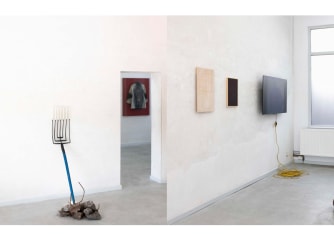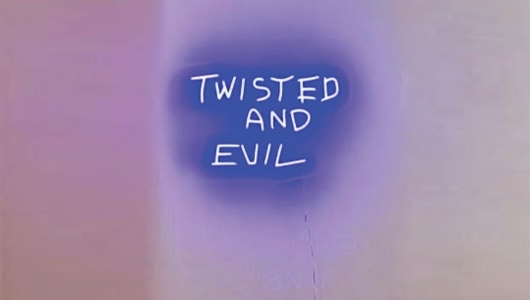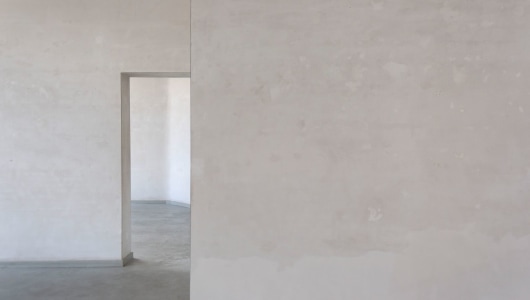guest
Bart Vandevijvere
Several figures or characters come together in Bart Vandevijvere's oeuvre, such as the walker, narrator, painter, listener, composer, spectator, dreamer or musician. They are a number of prototypes who are close to him as an artist, following his path sometimes nearby and other times from a distance. One of them could be Emile Parisien (b. 1982, lives and works in Paris), the French saxophonist and composer, who deploys the exhibition, as it were. With his name, he seems to embody the artist's second nature. In the studio, his love and passion for jazz and contemporary classical music co-determines the rhythm and pace of his creative process. He plays with the attitude of music makers who help shape his artistic flow and the dynamic layering in each artwork. Idea and execution come together simultaneously in different stages, with strips and sweeps.
And Morton Feldman (1926-1987) is also never far away as an inspiration and key figure: "Do we have anything in music, for example, that really wipes everything out, that just cleans everything away?" After a lifetime of composing, experimenting and stretching musical consciousness, the American composer joined a rich tradition with a focus on the minimal and the abstract: wanting to add less and less and to emphasize more and more the voids between everything that already is, striving for art that dissolves in time.
And time slowly solidifies in the painter's canvas, while the acrylic and linen were first "set in motion." The raw material of each work is paint, smeared, built up and organically brought into an open composition without laying out a particular visual scenario beforehand. The development of 2017's "Due to Emile Parisien" also takes place by doing and ongoing. The pictorial components span a pink glow with small keys along one side and black lines without musical notes tumbling crisscross on the other. The interrelationships of the two spheres, seem to find each other in a diagonal experience with links of red, white, blue-gray and so much more that presents itself while looking.
Indeed, each work materializes between the drying time of the different layers of paint and textures, which are sometimes transparent, sometimes opaque, strongly accentuated or, on the contrary, removed. Different layers of paint are scrubbed, irrigated or wiped out during the painting process. There is no elaborated storyline with a guiding plot, but a concentrated combination of improvisation and investigation. And this is evident in more recent works such as "Whatever happens" or "(Ver)standings" where surfaces seem to liquefy and the white seeks to lead the other colors astray with a feint. Almost in the center of the canvas, unfolded visual elements shift their weight and jump from geometric, architectural motifs to still disordered structures and forms. There is a facial illusion going on, where reassuring elements are touched by other gathered paint particles and water features.
In the work of Bart Vandevijvere, intuition and chance play an important role. His quest is therefore a balancing act between controlling and letting go, between holding on to what irrevocably passes and trying to perpetuate the exciting flow of time. He seems to embrace and sing the changing nature of everything, replacing the immobile with the shifting. In his work, then, he alternates the timeless static image with the inexorable movement of change. His paintings themselves narrate the path they took, walking their own course past uncertainties, over humps and bumps, stalled by unforeseen or self-induced aberrations.
However, his work illustrates nothing, it represents nothing. There is no walking map. His work takes place. His work is present among the contours of abstract color zones, spatial dimensions and inflamed coincidence factors that he has made the most of. In a way, they almost look like graphic collages with different positions, cutouts, tears or rays. And sometimes there is calm, sometimes there is noise. Dissonant voices whisper through the flow of the work, between the unfinished and perfect, with a crease or a frayed edge.
The visual continuum continues in the eyes of the viewer, who explores the artist's marks and traces, tries to follow the hand or muses on the painter as an actor. That viewer loses himself in the rhythm of erratic scratches and cracks, syrupy brushes and the limits of the canvas. Bart Vandevijvere elicits a desire to keep looking and listening, to wander, stroll, stroll and walk. By entering a painting you are taken into his world: outside becomes inside, building becomes breaking down, expressionism becomes abstraction. In his world you fall under the spell of painting pleasure, of a celebratory year in which he has continued to challenge time for nearly sixty years. In his world, every moment arises, tilts, wallows and every hold is for a moment a new discovery. A chain reaction of experiences emerges. A vague destination becomes above all a connecting trip to a sincere presence.
Els Wuyts
December 2020
Several figures or characters come together in Bart Vandevijvere's oeuvre, such as the walker, narrator, painter, listener, composer, spectator, dreamer or musician. They are a number of prototypes who are close to him as an artist, following his path sometimes nearby and other times from a distance. One of them could be Emile Parisien (b. 1982, lives and works in Paris), the French saxophonist and composer, who deploys the exhibition, as it were. With his name, he seems to embody the artist's second nature. In the studio, his love and passion for jazz and contemporary classical music co-determines the rhythm and pace of his creative process. He plays with the attitude of music makers who help shape his artistic flow and the dynamic layering in each artwork. Idea and execution come together simultaneously in different stages, with strips and sweeps.
And Morton Feldman (1926-1987) is also never far away as an inspiration and key figure: "Do we have anything in music, for example, that really wipes everything out, that just cleans everything away?" After a lifetime of composing, experimenting and stretching musical consciousness, the American composer joined a rich tradition with a focus on the minimal and the abstract: wanting to add less and less and to emphasize more and more the voids between everything that already is, striving for art that dissolves in time.
And time slowly solidifies in the painter's canvas, while the acrylic and linen were first "set in motion." The raw material of each work is paint, smeared, built up and organically brought into an open composition without laying out a particular visual scenario beforehand. The development of 2017's "Due to Emile Parisien" also takes place by doing and ongoing. The pictorial components span a pink glow with small keys along one side and black lines without musical notes tumbling crisscross on the other. The interrelationships of the two spheres, seem to find each other in a diagonal experience with links of red, white, blue-gray and so much more that presents itself while looking.
Indeed, each work materializes between the drying time of the different layers of paint and textures, which are sometimes transparent, sometimes opaque, strongly accentuated or, on the contrary, removed. Different layers of paint are scrubbed, irrigated or wiped out during the painting process. There is no elaborated storyline with a guiding plot, but a concentrated combination of improvisation and investigation. And this is evident in more recent works such as "Whatever happens" or "(Ver)standings" where surfaces seem to liquefy and the white seeks to lead the other colors astray with a feint. Almost in the center of the canvas, unfolded visual elements shift their weight and jump from geometric, architectural motifs to still disordered structures and forms. There is a facial illusion going on, where reassuring elements are touched by other gathered paint particles and water features.
In the work of Bart Vandevijvere, intuition and chance play an important role. His quest is therefore a balancing act between controlling and letting go, between holding on to what irrevocably passes and trying to perpetuate the exciting flow of time. He seems to embrace and sing the changing nature of everything, replacing the immobile with the shifting. In his work, then, he alternates the timeless static image with the inexorable movement of change. His paintings themselves narrate the path they took, walking their own course past uncertainties, over humps and bumps, stalled by unforeseen or self-induced aberrations.
However, his work illustrates nothing, it represents nothing. There is no walking map. His work takes place. His work is present among the contours of abstract color zones, spatial dimensions and inflamed coincidence factors that he has made the most of. In a way, they almost look like graphic collages with different positions, cutouts, tears or rays. And sometimes there is calm, sometimes there is noise. Dissonant voices whisper through the flow of the work, between the unfinished and perfect, with a crease or a frayed edge.
The visual continuum continues in the eyes of the viewer, who explores the artist's marks and traces, tries to follow the hand or muses on the painter as an actor. That viewer loses himself in the rhythm of erratic scratches and cracks, syrupy brushes and the limits of the canvas. Bart Vandevijvere elicits a desire to keep looking and listening, to wander, stroll, stroll and walk. By entering a painting you are taken into his world: outside becomes inside, building becomes breaking down, expressionism becomes abstraction. In his world you fall under the spell of painting pleasure, of a celebratory year in which he has continued to challenge time for nearly sixty years. In his world, every moment arises, tilts, wallows and every hold is for a moment a new discovery. A chain reaction of experiences emerges. A vague destination becomes above all a connecting trip to a sincere presence.
Els Wuyts
December 2020
Artworks
Articles
Media
Highlights
Recommendations
Collections
Shows
Market position
CV
Artworks by Bart Vandevijvere
Articles on Bart Vandevijvere
Shows
Free Magazine Subscription
Articles, interviews, shows & events. Delivered to your mailbox weekly.








